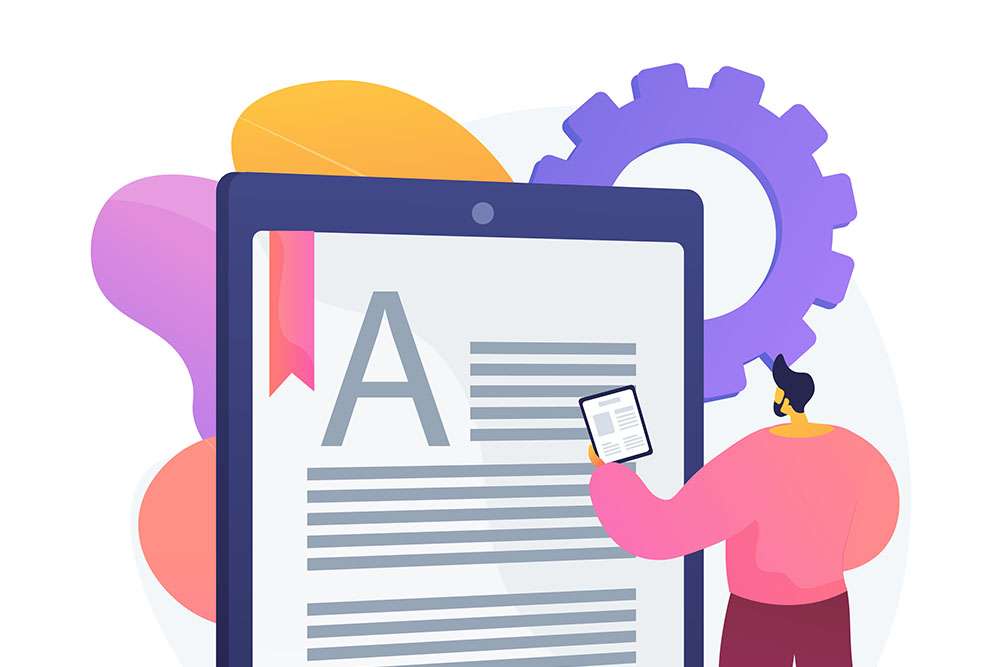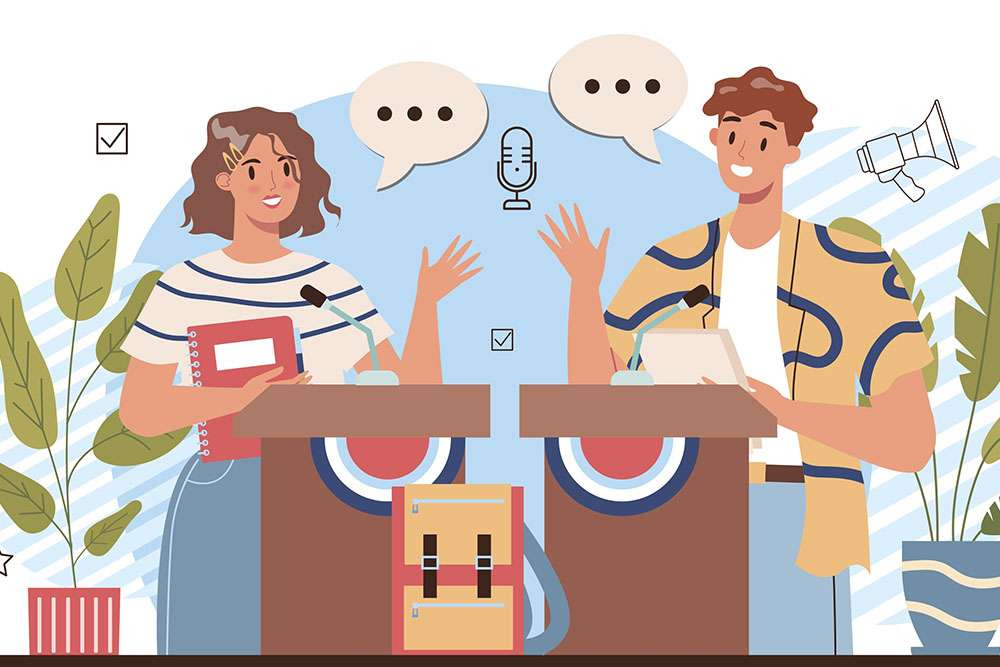
The Power of Storytelling in eLearning
Storytelling has been an integral part of human culture for thousands of years. From ancient cave drawings to the timeless tales of oral tradition, stories have served as a conduit for information, wisdom, and entertainment. In today’s digital age, this traditional art form has found a new home in eLearning. As online education continues to gain popularity, the power of storytelling has emerged as a highly effective tool for imparting knowledge and engaging learners in a deeply immersive learning experience.
At its core, eLearning aims to help learners acquire new knowledge or skills by facilitating active engagement with the subject matter. Effective eLearning does not involve simply presenting information to learners and expecting them to absorb it passively. Rather, it seeks to draw learners into the learning process by appealing to their curiosity, imagination, and emotions. This is where storytelling truly shines – it has the unique ability to tap into these facets of the human psyche and make learning an engaging, memorable experience.
There is a multitude of reasons why storytelling is an invaluable resource in the eLearning toolbox. For one, stories have a natural ability to capture attention. In an age where our attention spans are shrinking, and distractions are omnipresent, this is a crucial aspect. Stories are engaging, relatable, and often entertaining, ensuring that learners stay focused and interested in the content.
Another aspect to consider is the way stories resonate with human emotions. When learners are emotionally invested in a narrative, they are more likely to retain the information presented to them. Stories have the power to evoke emotions such as empathy, curiosity, and excitement, allowing learners to connect with the material on a deeper level. Moreover, this emotional connection can also increase motivation, as learners become invested in the narrative and are eager to see it unfold.
Memory is another area where storytelling outshines more traditional content delivery methods. It is said that facts are easily forgotten, while stories are remembered. This is because stories stimulate our inherent human ability to process and organize information through narrative structure, which aids in content retention. Integrating important learning points into a captivating story helps learners remember the material more effectively than if presented through tedious bullet points or monotonous slides.
Moreover, storytelling taps into learners’ natural desire for exploration and problem-solving. A well-crafted narrative presents obstacles for learners to overcome, either as part of the story or indirectly through embedded activities and scenarios. By presenting information in this format, eLearning designers can promote deeper, more critical thinking and a higher level of cognitive engagement. As learners become active participants in their education, they develop a more profound understanding of the subject matter and its practical applications.
The universality of stories also cannot be ignored. Stories transcend cultural and generational barriers, facilitating a shared understanding among diverse learners. By using familiar narrative structures, eLearning designers can create content that feels accessible and relatable to learners from various backgrounds. Additionally, stories often employ metaphor and symbolism, which can be potent devices for conveying complex ideas and abstract concepts. In this way, storytelling can facilitate comprehension and internalization of new knowledge, even in challenging subject areas or for learners with differing learning styles.
In conclusion, storytelling is a powerful and versatile tool that breathes life into eLearning experiences. It captures attention, elicits emotional connections, promotes retention, encourages critical thinking, and transcends cultural boundaries—all essential ingredients for an impactful and memorable learning experience. By harnessing the art of storytelling, eLearning designers can transform dull, passive content into vibrant, engaging narratives that not only educate but inspire learners to become active participants in their journey of personal and professional growth.

Incorporating Narrative Elements in Course Design
In eLearning, adopting a narrative approach can provide richness and depth to your courses, making the learning experience more engaging and memorable for your audience. The power of storytelling allows learners to connect with the content on an emotional level, fostering higher retention rates and promoting long-lasting understanding. This chapter outlines some key narrative elements to incorporate into your course design.
1. Establish a clear structure: Just like any good story, your eLearning course should have a beginning, middle, and end. Introduce the topic at the beginning, providing a brief overview of what learners can expect to gain from the course. The middle should consist of in-depth exploration of the various concepts or skills, breaking down complex topics into manageable, understandable nuggets of information. Lastly, the course should end with a conclusion which recaps the main takeaways and reinforces the learning objectives.
2. Create a relatable context: Context is crucial in storytelling, as it helps learners set the stage for understanding and relating to the material being taught. Use real-world scenarios, relevant examples, and case studies to anchor the content in a familiar and relatable framework. When learners can see the connections between the course material and their everyday lives or professional experiences, they are more likely to stay engaged and remember the content in the long run.
3. Develop compelling characters: Characters are the heart and soul of a good story; they make it relatable, engaging, and authentic. In eLearning, incorporating personas to represent different learner archetypes can help illustrate diverse perspectives, and showcase how the content applies to various individuals. Characters can also act as mentors or guides, empathizing with the learner’s challenges, sharing insights, or delivering advice through the learning process.
4. Infuse conflict and resolution: Conflict is a critical aspect of storytelling, as it drives the plot and keeps the audience intrigued. Introducing challenges, obstacles, or tensions and demonstrating how they can be overcome can make your course more engaging and memorable. It can also be beneficial to show multiple paths to resolution, allowing learners to see that there are different ways to reach a solution. This can enhance their critical thinking and problem-solving skills.
5. Utilize vivid imagery and multimedia: Descriptive language, imagery, and multimedia elements can make a story more accessible and engaging. Use visuals such as photos, illustrations, or graphics alongside the text to help learners visualize complex ideas or concepts. Animation and video can be especially powerful tools for showcasing a story’s development or explaining intricate procedures.
6. Embrace interactivity and personalization: Interactive and personalized elements can make your course feel more like a story, as they allow the learner to play an active part in the narrative. eLearning activities such as simulations, quizzes, or drag-and-drop exercises allow learners to make decisions or choices that directly impact the unfolding of the story. Moreover, incorporating adaptive learning paths based on individual learner profiles or preferences can empower them to forge their own unique narrative through the course.
To sum up, the integration of narrative elements into eLearning course design can greatly enhance the learner experience, turning standard instructional materials into engaging, memorable stories. By establishing a clear structure, creating relatable context, developing compelling characters, infusing conflict and resolution, utilizing vivid imagery and multimedia, and embracing interactivity and personalization, educators can captivate their audience and foster a dynamic learning experience that resonates on a deeper level.

Character Development and the Learner Connection
In eLearning, it is essential to create a strong connection between learners and the content being delivered. One of the most effective ways to foster this connection is through character development in storytelling. In eLearning, characters can be real or fictional, but their primary purpose is to serve as a conduit for learners to connect with the content on a deeper, emotional level. As such, well-developed characters can lead to increased engagement, retention, and understanding.
Creating relatable and compelling characters begins with understanding the target audience. As an instructional designer, you must start by identifying the demographics, educational background, and unique needs of your learners. This will help you create characters that resonate with your audience, often facing similar challenges and obstacles that the learners experience or can empathize with. Connection with characters can be further strengthened by adding diversity in terms of age, gender, and cultural backgrounds, which allows for a broader and more inclusive appeal.
When developing characters for your eLearning narratives, keep in mind the following essential elements:
1. Background and personality: To create a bond between the character and the learner, it is vital to develop the character’s background and personality traits that align with the learners’ interests and experiences. Are they go-getters or more cautious? Are they introverted or extroverted? The more detailed and fleshed out a character’s background and personality are, the more the learners will recognize themselves or someone they know in the story, resulting in increased connection and engagement.
2. Strengths and weaknesses: Just like real people, characters in your eLearning narratives should have both strengths and weaknesses. This adds depth and makes them more relatable as they work through challenges tied to the course’s learning goals. By showcasing a character overcoming their weaknesses through hard work, perseverance, or utilizing newfound knowledge, learners will be more likely to apply the lessons learned through the narrative to their own lives.
3. Goals and motivations: Establishing clear goals and motivations for your characters is crucial as their journey serves as a learning path for the audience. Aligning the character’s goals with the learning outcomes of the course will help learners understand the relevance of the content and remain engaged as they follow the character’s progress. Additionally, clearly stating and reinforcing the motivations behind these goals will make it easier for learners to root for the characters and become emotionally invested in their journey.
4. Growth and change: A core aspect of storytelling is the growth and change that characters undergo while facing challenges and obstacles. This change should align with the transformation or improvement you want learners to achieve. By depicting how characters apply new knowledge or skills to find solutions to their problems, learners will be more likely to see the real-world applications and benefits of the content they are consuming.
5. Conflict and resolution: Introduce conflict to the characters’ stories that directly relates to the topic being taught. This conflict can be internal, such as dealing with self-doubt or overcoming a limiting belief, or external, like navigating a complex situation in the workplace. The way the characters tackle and resolve these conflicts should reflect the desired learning outcomes or problem-solving capabilities you want learners to gain from the course.
To summarize, character development is a critical component in leveraging storytelling for effective eLearning. By creating relatable and engaging characters, incorporating backgrounds and personalities that resonate, and showcasing growth and change through conflict and resolution, you can significantly enhance learner connection and engagement, ultimately leading to more successful learning outcomes.

Pacing and Conflict: Keeping Learners Engaged
Pacing and conflict are vital components of any compelling story. They hold the key to keeping the audience engaged and invested in the outcome. In eLearning, incorporating elements of pacing and conflict in the course design can transform an otherwise dull and monotonous learning experience into an interactive and immersive journey. The goal is not only to present information but to captivate the learners and maintain their attention long enough for them to absorb the material.
Pacing refers to the speed at which a story unfolds, including how information is revealed to the learners. In eLearning, pacing should be carefully planned and adjusted to cater to different learner needs and styles. When the pacing is too slow or too fast, learners can become disengaged or overwhelmed, respectively. To strike the right balance, consider the following:
1. Use microlearning: Microlearning involves breaking down large chunks of content into smaller, manageable pieces. This could take the form of short videos, quizzes, or interactive activities. Not only is microlearning a time-efficient approach, but it also ensures learners have the opportunity to process the information at their own pace before moving on to the next portion of the course.
2. Create a variety of activities: Design diverse activities that cater to different learning styles and preferences. Mix up your course by including audio clips, text-based content, videos, interactive simulations, and quizzes. This way, learners can engage with the material in a way that appeals to them, which helps maintain their interest.
3. Space out assessments: Regular assessments in the form of knowledge checks, quizzes, or interactive games allow learners to test their understanding of the content. However, it’s crucial not to overwhelm them with constant evaluations. Space out assessments strategically, allowing them enough time to study the material and gain a solid understanding before proceeding.
Conflict, on the other hand, is the backbone of any good story. It pertains to the challenges the characters encounter or obstacles they must overcome. Conflict is what keeps audiences engaged as they follow the protagonist’s journey in resolving their struggles. In eLearning, conflict can manifest through scenarios, case studies, or presented challenges aligned with the course content. To weave in conflict effectively, consider the following:
1. Develop relevant challenges: Ensure the conflicts presented are not only engaging but also grounded in the learning objectives. Create challenges that learners can relate to, such as situations they may encounter in their professional lives. This way, they’ll be more invested in finding a resolution and, ultimately, gain a deeper understanding of the subject matter.
2. Encourage problem-solving: Present the learners with problems that require them to apply their newly acquired knowledge and skills. Give them the opportunity to analyze, discuss, or debate the best course of action for resolving the conflict. Problem-solving not only keeps learners engaged but also promotes critical thinking and collaboration.
3. Integrate feedback loops: Provide learners with continuous feedback to reinforce their understanding of the material. Use assessments, quizzes, and interactive activities to offer insight into their performance, highlighting areas of strength and improvement. By giving learners real-time feedback, they’ll be motivated to overcome obstacles and progress in their learning journey.
In conclusion, pacing and conflict are powerful storytelling tools that, when integrated into eLearning courses, foster an engaging and immersive learning experience. By fine-tuning pacing through microlearning and variety, catering to different learning styles, and incorporating relevant and thought-provoking conflicts, instructional designers can create courses that not only inform but also captivate their audience. Furthermore, utilizing continuous feedback loops provides opportunities for reinforcement and reflection, motivating learners to overcome obstacles and progress in the course material.

Assessing and Adapting Stories for Various Learning Styles
In the world of eLearning, understanding and catering to the various learning styles of individuals is crucial to the success of any course. When incorporating storytelling into the curriculum, it’s particularly important to keep these learning styles in mind to ensure that the narrative elements connect with and engage learners effectively.
There are several learning styles that are widely recognized and catered to in eLearning. These include Visual, Auditory, Reading/Writing, and Kinesthetic (VARK) learning styles, as well as Logical and Social learning preferences. To create narratives that resonate with all learners, designers should assess their stories and make the necessary adaptations for each learning style.
1. Visual Learners
Visual learners prefer to process information through images, diagrams, and visual presentations. When adapting stories for this learning style, it’s essential to incorporate relevant images, graphics, and multimedia elements that can help learners visualize the narrative.
To assist visual learners:
– Create storyboards, diagrams, and illustrations that represent key story elements and interactions.
– Use colors, fonts, and consistent design elements to visually represent relationships between characters, ideas, and sections within the narrative.
– Include video or animated content that incorporates visuals to enhance the storytelling.
2. Auditory Learners
Auditory learners prefer to process information through sound and spoken language. They often benefit from listening to discussions, explanations, or stories told aloud. When adapting stories for auditory learners, consider incorporating:
– Voiceovers, narration, or podcasts to provide supplementary or core narrative content.
– Opportunities for learners to participate in guided discussions or role-play activities related to the story.
– Sound effects, music, or other auditory cues that can evoke emotions and create atmosphere within the story, enhancing the learner’s experience.
3. Reading/Writing Learners
Reading/Writing learners prefer to process information through written words, reading and writing activities. When adapting stories for this learning style, you should:
– Provide ample reading opportunities via supplementary text, character descriptions, or detailed explanations.
– Encourage reflection and understanding through writing activities, such as journal entries, essay questions, or summaries of story events.
– Clearly define keywords and concepts within the narrative, perhaps through a glossary or in-text notation.
4. Kinesthetic Learners
Kinesthetic learners prefer to process information through physical, hands-on experiences. Adapting storytelling for kinesthetic learners is a unique challenge in eLearning but can be achieved by:
– Including interactive activities that require learners to manipulate story elements or choose actions for characters.
– Encouraging learners to create physical representations of story components, such as building dioramas or creating models.
– Incorporating games or simulations that allow learners to engage with the narrative in an active and dynamic way.
5. Logical & Social Learners
Finally, logical learners (who prefer problem-solving and logical reasoning) and social learners (who prefer learning through collaboration) may also benefit from specific adaptations in storytelling. For these learners:
– Create challenges, puzzles, or scenarios within the story that encourage problem-solving and critical thinking.
– Include group activities, online discussions, or collaborative storytelling efforts that invite social learners to engage with the content and each other.
When assessing and adapting stories for various learning styles, it’s important to remember that individuals may have a combination of learning preferences, and addressing only one style in isolation may not be sufficient. Designers should strive to create stories that offer a rich and well-rounded eLearning experience incorporating a variety of learning approaches.
By taking the time to assess your narrative for these different learning styles and modifying the story as needed, you can create a more engaging and effective eLearning experience tailored to the diverse needs of your learners. As a result, your students will connect with the material on a deeper level and gain greater understanding and retention of the course content.


